How to Blog for Fun and Profits – 30 Day Training
Today’s Sponsor: Web Profit School
Resource Mentioned: 30-Day-Blogging-Challenge
Quote of the Day: “Just Launch It.” — Matt Levenhagen
My Goal: Create Authority Blog in 30 days
Day 2 of the 30-day blogging challenge:
I’m participating in Sara Arrow’ 30-Day Blogging Challenge. I decided to turn this 3o-day challenge into 100% free training on how to launch an authority blog from start to scratch.
You’re about to discover a step-by-step process
for publishing your own blog and making money from it!
It doesn’t matter if you’re not very technical. It doesn’t even matter if you’re new to the internet.
That’s because in the next 30 days you’ll discover:
- How to choose a domain name and web hosting.
- How to get your first blog up and running fast.
- How to monetize your blog.
- What to write about to keep your readers hanging on your every blog post.
- How to drive targeted traffic to it and turn your blog into a popular niche hang out.
- And much more!
You’re going to learn how to make money with your blog primarily by promoting affiliate offers, your own product or services.
To that end, you’ll complete these steps:
Step 1: Choose a hungry niche. Day job (overlap skills with your internet business if possible)
Step 2: Select a profitable, in-demand product to sell to this niche. (Clickbank, Amazon, your service's and products etc..)
Step 3: Set up a blog and start creating content that caters to the niche. (establish authority)
Step 4: Promote services, products or affiliate offers on your blog. (solutions to real problems, information products)
Step 5: Drive targeted, money-in-hand prospects to your blog. (build your list & passive income)
Blogs have become an essential part of making money online for one simple reason.
They work!
No matter what you’re selling or what your business model is, a blog can help you achieve more because it helps establish you as an expert.
Setting up a blog is only part of the battle. You still have to :
- Define your goals
- Pick your money/passion niche
- Optimize your blog
- Do keyword research
- Create content
- Generate traffic
- Build your opt-in list
- Monetize your blog
By the time you finish this training, you’ll know exactly how to start and run your own profitable blog!
Change Your Mindset!
Too often people put a stop to the process as they fear that they’re not an expert. Or fear that they’re not the authority to write about a specific topic.
Heck, with proper research you don’t need to be the expert.
To establish authority you don’t have to be the most knowledgeable but you do need to be the most helpful.
This can be done by providing your audience the information they’re looking for.
Basically, you don’t need to be an expert in your niche to start an authority blog. That will come with time as you build your blog.
You simply need to know how to find a niche, solve a problem, and what actions are necessary to solve it.
But before we get into that, I want to show you that there are plenty of other ways to benefit and profit (directly and indirectly) from your blog.
Read on…
People use to publish books to showcase their expertise, now most anyone can publish a blog. And once that blog becomes popular, the blogger’s status is further elevated in the niche.
And that’s NOT all.
The more good content you post, the more your readers start to trust you… and that indirectly leads to more sales.
Plus if you allow your readers to interact with you (by allowing comments), that further strengthens your bond with them. End result? A more profitable blog.
Some people use blogs to raise their status in a niche. And some people use this elevated status as a springboard to more opportunities, such as free publicity and book deals.
Example: The big book publishers like to see when one of their newly signed authors has a platform. By platform, I mean a waiting audience. A blog is one such platform. If you build a popular blog and then go after a book deal, you can bet the publishers will take note.
If you invest your time and effort into an authority blog you can build a quality online business that will make you money every single month.
I invite you to ask questions below or via email using my contact form. I’m here to help! So don’t jump ahead – just stick with the lesson for that day.
The next lesson will be about why people fail online and how you can avoid that and be successful.
The One Reason People Fail Online – Niche Selection
Quote of the Day: "If you always do what you always done, you always get what you always got". - Beulah Underwood
She's the Author of "A Paycheck Away From Poverty": A Guide To Independent Financial Security. She was my mentor and the first person I heard used this quote.
Many people attribute this quote to Anthony Robbins and before him Albert Einstein, Henry Ford, and even Mark Twain. Regardless of the origin, what matters is the point it makes.
Day 2 - Niche Selection
The number one reason I see people fail online is NOT the technology, it's not the lack of motivation, it's that they pick the wrong niche.
Goal: Narrow down a small list of potential niches to enter
Resources: Google Keyword Planner, Forum directories, Article Directories, Niche Forums, Facebook Groups, Google Drive
Today is the day you take the first step towards creating a successful blog. The main goal for today is choosing your niche. There are two primary methods of thought for choosing a niche for your blog.
- Choose a niche for profitability
- Choose a niche that you have an interest in
Ask around about how to find a niche, and some people will tell you to follow your passions. Others will tell you to follow the money.
Here’s an idea: Start with your passions… but then find out if they’re profitable. That way you’re sure to make money, yet you’re also working in a niche which interests you.
Don't make this rookie mistake:
Many beginning bloggers and affiliate marketers make the mistake of choosing a product or two and then building a blog around that product. Then they have to figure out to whom they should sell the product.
Problem is, there may not be a demand for the product. Or there may not be an easily reachable niche market. Or perhaps it’s a “one hit wonder,” where you can get people to purchase this one product – but you can’t figure out what else to sell to them.
So here’s what you do instead: Find a hungry market first. And once you’ve determined that a market exists – and these folks are already buying products and services – then you can figure out what to sell them. (Usually, this means you sell them what they’re already buying).
Read on…
How to come up with niche ideas:
- Brainstorming your interests
- Listing what you are good at
- Browse forum directories
- Browse article directories
- Browse Niche Forums / Facebook Groups
- Use a keyword planner to expand on your list of ideas
So, the first step is to uncover a niche. Let’s start by brainstorming. Answer the following questions. Don’t limit yourself to just one answer per question. Indeed, you should list as many answers as possible for each question.
Brainstorming a Niche
- What are your favorite topics of conversation?
- What was your favorite topic in school?
- What job do you work now?
- What job do you wish you had?
- What kinds of sites do you visit regularly and/or have bookmarked on your computer?
- What kinds of TV shows/channels do you like to watch?
- What types of magazines do you subscribe to?
- What are your hobbies?
- What do you spend your expendable income on?
- If you had $1000 to spend right now to spend on yourself, just for fun – what would you do with it?
- What are your favorite books?
- If you could take three college courses, what would they be?
- What topics do you know a lot about?
- What topics do your friends ask you about?
- What type of events do you like to attend?
- List your other interests:
I use Google Drive, I can write my tips and collect my research notes, it's already built into Gmail for you. They have the equivalent of Word Editor on there. I post everything up there in the cloud.
Step 1: Log in to Gmail. If you don’t have a Google account you can always signup for a free one.
Step 2: Copy and Paste the above niche questionnaire into Google Docs. You will be able to access and use it anytime you want.
Today’s task: Complete the above questionnaire. Once you’re done with it, you should have several possible niches that interest you and that you know a lot about.
How To Tell If A Niche Is Profitable – Quick and Easy
Quote of the Day: “Be independent of the good opinion of other people.” - Abraham Maslow
Samuel Zemurray was called
Early on, he spotted a MASSIVE
And by making one “tiny shift”
He turned himself into one of
WORLD...
...All of the “big boy” banana sellers were throwing away the ripe speckled bananas. “Hmm…interesting!” He thought…
He had spotted his profit
He turned bad bananas
Keep reading to find out how you can spot your profit opportunity.
How to Choose and Research A Make Money Niche
Today’s Sponsor: Kim Witherspoon
Resources Mentioned: Word Tracker, Ezinearticles, Google
Last time you started learning about the different ways you can research a market to see if it’s profitable.
Let’s pick up where we left off…
b) Search Google
This is easy – enter your broad keywords into Google (such as “Mountain Bikes or bodybuilding” ) and see what comes up. You’re looking for two things:
- The organic results. These are the regular search engine results. Pay attention to the top sites (those on the first page).
What are these sites selling? If many of the top sites are directly selling products or services – or if they carry ads for products and services – that’s a good sign. And if they’re selling similar items, that’s a clue about which particular kinds of products are popular.
Secondly, look at the competition. Are there plenty of sites in the results? Again, that’s generally a good sign, because it shows some demand.
- The sponsored results. You also want to look at the paid ads that appear at the top, bottom and along the sides of the results. If there are only a couple ads, be worried. But if all the ad slots are taken, that’s good – because marketers don’t spend money advertising if there are no willing buyers.
c) Do a Keyword Search
Next, check out a keyword tool like WordTracker.com, Google Keyword Planner or your favorite tool. Enter your broad keywords. Do you see a lot of results? Do you see evidence that people are looking to buy?
Example: You might see searches for product names (e.g., [product name] review).
If you discover a lot of searches and you also notice that some of them are from buyers, that’s a good sign.
Example: A search like “buy [product name]” is a clear indication that the searcher is a real prospect.
d) Check Offline Publications
Now look at offline publications related to your market. For starters, are there magazines devoted just to your market?
Example: If you’re interested in dog training, then you’d quickly notice several dog-related magazines.
That alone is a good sign. But you also want to browse through these magazines and see what type of paid advertising appears in the publication. This will give you a clue about what’s hot in that market right now.
e) Keep an Eye Out for Other Paid Advertising
Listen to the radio and watch TV. Are there any channels or stations related to your market? If not, can you find any specific TV programs related to your market?
And if you watch the commercials, you’ll see plenty of paid advertisements for paid products. Both the show and the commercials indicate there is a demand for products in the market.
f) Look for Offline Marketplaces
Finally, you can look to offline marketplaces to see if there is a demand. You can look for retail shops or entire sections in big stores devoted to your market.
You should also look for offline events, like trade shows, conferences, and workshops in your market.
Final Stage Of Niche Research
The last part of research is getting an understanding of what types of products and affiliate programs exist for the niche. This will allow you to identify what type of products are in the niche and what is profitable.
Look at competitor products, generate your own product ideas, look for voids in the market, and even look at affiliate marketplaces and affiliate programs to get an idea.
When you look at affiliate marketplaces you are just trying to get an idea of what kind of products are available for the niche. This doesn’t mean that you have to monetize with affiliate products. Do this step to get an idea of what is already out there and to get potential product ideas.
Check out affiliate networks such as Amazon's Affiliate Program, Clickbank, Commission Junction, Alibaba, JVZOO, Ebay, Warrior Forum and many more.
Another great way to find affiliate programs for your niche is Googling your main keywords along with the words “affiliate program.”
If you niche was Day Trading you would Google:
Day Trading Affiliate Program.
It's as easy as that.
Next, let's head over to Ezinearticles to get some ideas. Go to the Ezinearticles sitemap. It breaks things down by category and subcategory. From there you can pick a sub-category and drill down to articles. This site is loaded with potential ideas for you to look at.
Bonus tip: There is a very cool website buzzsumo.com that lets you search for top content and influencers based on keywords that you type in. They have an algorithm that ranks the content and influencers based on social shares, page rank, page authority, and more.
This is a great place to look for competitors and influencers in your niche. It can also be a great place to get ideas for content, products, partnerships, guest blogging spots, finding writers and more.
Choose A Niche For Your Blog
Once you do all the research described in this lesson and the last, it will quickly become clear which of your potential markets have the most profit potential. Also, don’t forget to consider your interests. It is really hard to write about a topic you are not interested in so this is key.
If you have a couple that seem to be equal, then just choose the market you think you’d enjoy the most.
Today’s task: Complete the research as described above.
Now that you have done all the research it is time to choose your niche. Consider all the things you reviewed today and make your decision.
Tomorrow you’ll start learning how to set up your blog!
What’s In A Name – How to Select Your Domain
Day 6: How to Choose the Right Domain Name and Web Hosting
Topics covered:
- Why it’s so important for you to register “yourname.com” and what to do if it’s taken
- Difference between domain name registration and servers—and web hosting
Goal: Get A domain, Get Hosting
Resources Mentioned: Godaddy, Namecheap, BlueHost, RoseHost, Liquid Web, EcoverMania,Lynda Goldman
Over the last few lessons, you went through the steps of first brainstorming potential markets and then researching them to see if they’re profitable. And that means you should now have a market that you’d like to blog about. Read on for your next step…
How To Install Your WordPress Website
Day 7 - Install Your WordPress Website
Last time you set up your domain name and hosting. Now it’s time to set up your blog. If you’ve done any research on blogs before, you probably already know there are a lot of choices.
So let’s go through some of your options to find out which one is the best…
- Self-Hosted or a Third-Party Blog?
Since I’ve already asked you to buy a domain name and hosting, it’s pretty clear that you’re going to set up a “self-hosted” blog.
Nonetheless, let me share with you why this is important…
You’ve no doubt seen some of the third-party blog solutions. One of the most popular is Google’s Blogger.com. There are also other solutions like LiveJournal.com, WordPress.com and a whole host of others.
All you have to do is register an account on these sites, choose a blog name… and you can be blogging in a matter of minutes. Most of these platforms are very user-friendly, meaning you don’t need to know a lick about scripts or other technical stuff in order to be up and blogging fast.
So why not use a third-party solution? Here’s why:
- No commercial content. Some of these sites flat-out prohibit commercial content. And since you’re going to turn your blog into a money-maker, a non-commercial blog isn’t an option for you.
- The site could disappear tomorrow. When you entrust your content – even your income – to a third party, you’re rolling the dice. The company could go bankrupt. They could sell to another company who changes the rules. Point is, your blog could disappear in an instant.
For example, Google deletes artist’s blog and a decade of his work along with it.
- You have no control over your content. Some third-party blog solutions paste their ads on your site. Some have very strict rules about what you can and cannot write about or what you can link to (which goes back to the commercial content issue again). And all of these sites can just arbitrarily pull your content or change the rules… and there’s nothing you can do about it.
Obviously, a self-hosted solution is best to retain control over your content. But which blog platform should you choose? There are plenty of platforms – just search Google to see what I mean.
For the purpose of this lesson, we will be teaching you how to install WordPress as your website/content management system.
Why WordPress?
- It's free!
- Easy to use
- Manage your website anywhere that has an internet connection
- No HTML or CSS coding skills required
- Themes for designing your website
- Completely customizable
- A lot of users = great support
- Unlimited functionality available with plug-ins
- Search engines like WordPress
Once you have set up your web hosting account, got your “Welcome” email and pointed your name servers to your new web host’s server, you are ready to install your WordPress website! (It may take as much as a day for the change to take place.)
The WordPress platform makes installation easy!
No matter who you have chosen for your web host, go to your cPanel dashboard (look in your “Welcome” email for instructions on how to log into cPanel) and scroll down through all the various options until you come to the section “SOFTACULOUS APPS INSTALLER”.
Click on the WordPress symbol, and it will take you to the next page. Scroll down if you have to, and when you find the button, click on “Install Now”.
You will then need to fill in information for your site in the following categories before proceeding to the next step:
- Protocol: Leave this blank if you want your URL to start with just “http://”—or if you have an SSL certificate for a “https://” sit—or you want “www”, press the drop-down arrow and select the protocol you prefer.
- Choose Domain: There should only be one domain showing—your new one—if this is a brand new web-hosting account. As long as the domain name is showing, you don’t have to do anything.
Tip: One of the first pieces of info you’ll get asked for is where you’d like to install WP – specifically, which directory on your domain.
You’ll want to install it on your “root” directory so that anyone who goes to www.yourdomain.com immediately sees your blog. As such, leave “Install on Directory” blank so that your blog is in your main/root directory.
- Site Settings: Replace the generic text with your site/blog name (e.g. “Web Profit School, Basketball Coach”); and a brief description of what it’s about.
(Do not check “Enable Multisite (WMPU)
- Admin Settings: Resist the urge to allow your admin name to be “Admin”—that is far too easy to hack! Choose something random, like “BlwDl2” as your admin name. (Randomize your password too.)
- Select Plugins: Enable the Limited Login Attempts plugin by checking the radio button. (We’ll be adding more plugins later).

- Advanced Settings: All you need to do here is enter the email address that you want WordPress to send your installation details to—and press “Install”.

Once you’ve pressed “Install”, that’s it! You can log out, and collect your installation details from your email inbox at the address you just entered.You’ll now be taken to a screen which tells you how to log into your new blog. The link should look something like this:
http://yourdomain.com/wp-login.php .Be sure to write this information down, along with your username and password so that you don’t forget or lose them.
Next, go to your domain name (www.yourdomain.com) to see if the installation was successful. If you see any error messages, delete the blog and try again. Otherwise, if all looks good, then log into your WP dashboard.
Today’s task: Log into your WP dashboard and familiarize yourself with all the links and functions.Tomorrow you’ll start learning about how to customize the form and function of your blog!
How to Find and Install a WordPress Theme
Yesterday you installed your WordPress blog on your domain. Today you’ll discover how to quickly and easily change the design of your blog.
Blog Design
We don’t need to go into too much depth about designing your blog. What you really need to know is to make it consistent with your brand and optimize for results.
The reason we don’t focus on blog design is because WordPress and WordPress themes make it really easy to make a great looking authority blog.
You can start out with a free theme and move to a paid theme as you go. You don’t need to know anything about HTML or web design in order to change the blog’s design. That’s because there are thousands of free and paid (premium) “themes” (designs) available for your WordPress blog.
I recommend that you don't even change your theme until you have ten posts.
Spend 5 minutes or less deciding, because you don't want to spend all day beautifying your site, if not going to make much money.
Most themes look good. Just don't pick an ugly one. At this point, your focus should be on creating content.
Keep in mind that you can get a high-quality theme anywhere from $50 to $100 later.
Tip: If you have a unique theme in mind – or if you want something totally exclusive – then you can hire a WordPress theme designer. Just go to upwork.com and post your request for a theme designer.
Generally, this isn’t necessary, however, since there are thousands of themes to choose from. You’re certain to find something that you like.
However, you can start with a theme and then have a designer “tweak” it to make it more exclusive or to better suit your purposes.
For example, you can have a designer create a new graphical header that better matches your blog’s name and content.
Here are three ways to find a theme:
- Go to https://wordpress.org/themes
- Use Google to search for “WordPress themes” or “WordPress templates.”
- Visit popular theme sites like ThemeForest.
In all cases, a simple search for WordPress themes will uncover thousands upon thousands of results. That’s why you’ll want to narrow down the results by searching for specific kinds of themes.
For starters, you can search for niche-specific themes, such as “weight loss themes” or “dog themes.” You can further narrow the results by searching for the colors or styles you like, such as:
- Columns: “two column” or “three column” themes.
- Colors: “black and white theme” or “blue theme” or your favorite colors.
- Style: “art themes” or “professional theme” or “simple theme.”
You can easily upload, preview and install it right from your dashboard.
If you are using a free theme from WordPress.org, go to your left-hand dashboard menu and click on Appearance>>Themes>>Add new. When the “Add Themes” window opens up, enter the name of your WordPress.org theme in the search bar.
If you don’t yet know the name of the theme you want, simply enter a parameter you want it to match, such as “3-column responsive”—always choose a responsive theme.
You will instantly see a selection of themes fitting those parameters that you can choose from. You will be given the option to Preview them before deciding to install.
If you have purchased or have downloaded a theme to your computer.
IMPORTANT: Keep your downloaded theme zipped.
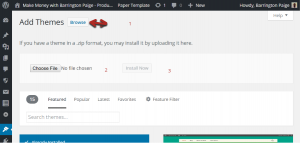
To find and upload your new/premium theme from your computer to your website:
- Go to Appearance>>Themes, and click on the “Add New” button.
- Select “Upload Themes”.
- Press the “Choose File” button and select your theme (still zipped)
- Click the “Install” button
Once you are notified the install has been successful, you can select your new theme from Themes.
You should now see the theme you just uploaded. Click on it to show a preview, then click on the “activate” link. Your new theme is now installed!
Today’s task: Find and install a theme. More customization tips coming tomorrow!
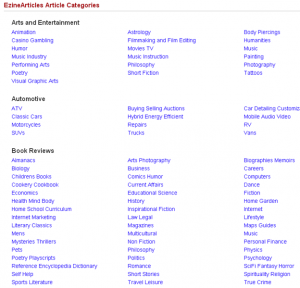
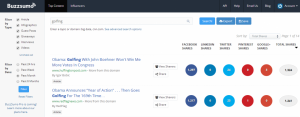
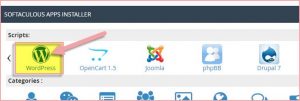
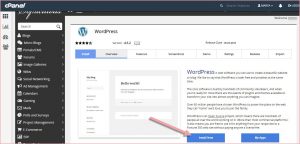


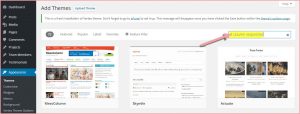
Recent Comments